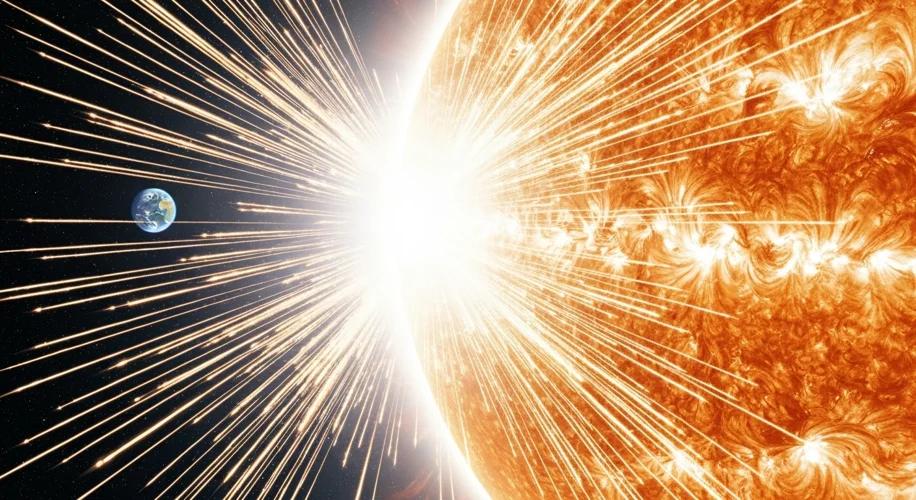Did you know the sun, our constant source of light and warmth, is also a powerhouse of incredibly fast electrons? Recent scientific discoveries are shedding new light on just how these superspeed particles get their incredible boost – and it all points to explosive events!
For a long time, scientists have observed these high-energy electrons streaming from the sun, often referred to as solar energetic particles (SEPs). They’re a key component of what we call “space weather.” Think of space weather like Earth’s weather, but instead of clouds and rain, we’re talking about solar flares, coronal mass ejections (CMEs), and charged particles moving through space.
So, what’s new? Researchers have been analyzing data from various solar observation missions, and they’ve found compelling evidence that the “explosive origins” of these superspeed electrons are directly linked to the shock waves created by CMEs. CMEs are massive eruptions of plasma and magnetic field from the sun’s corona. When these eruptions occur, they can generate shock waves that propagate outward through space, much like a sonic boom in the atmosphere.
It’s these shock waves that act like cosmic accelerators. As the charged particles, including electrons, encounter these powerful shocks, they are accelerated to incredible speeds – speeds that can get them to Earth in a matter of minutes to hours.
Why is this important? Well, these energetic particles can have a significant impact on our technological world. When a strong stream of these particles hits Earth’s magnetosphere (our planet’s magnetic field), it can:
- Disrupt satellite operations: High-energy particles can damage electronic components, leading to glitches or failures in our satellites, which we rely on for communication, navigation, and weather forecasting.
- Interfere with radio communications: The charged particles can ionize the Earth’s upper atmosphere, causing blackouts in radio signals, particularly in polar regions.
- Pose risks to astronauts: For astronauts on the International Space Station or on future missions beyond Earth’s protective magnetic field, SEPs represent a significant radiation hazard.
Understanding the precise mechanisms behind the acceleration of these particles is crucial for improving our ability to forecast space weather events. Just like we try to predict hurricanes or blizzards, space scientists are working to develop better models for predicting solar activity and its potential impacts on Earth.
This new insight into the explosive origins of these superspeed electrons helps fill in a critical piece of the puzzle. It underscores the dynamic and often violent nature of our sun and reminds us how interconnected our planet is with the wider solar system. As we continue to rely more heavily on technology that’s vulnerable to space weather, this kind of research is more vital than ever.

